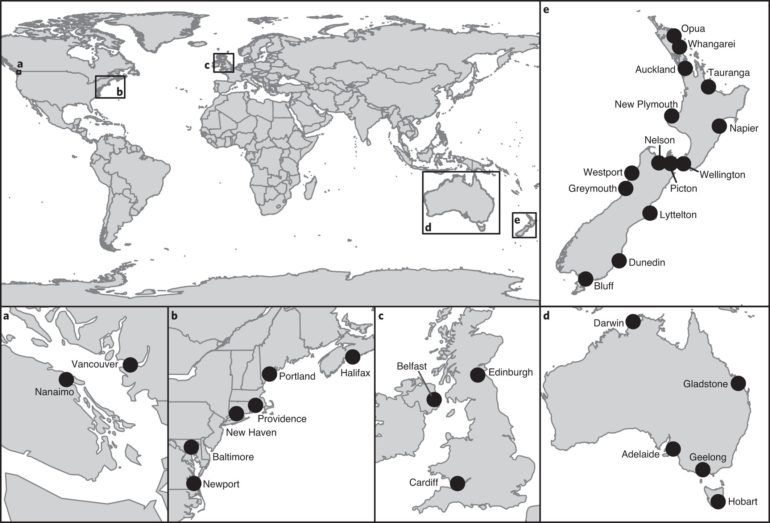A team of researchers affiliated with several institutions in New Zealand and Australia has created a model to forecast coastal hardening around the world in the coming years. In their paper published in the journal Nature Sustainability, the group describes collecting and analyzing satellite data to build their model.
Coastal hardening happens when humans build structures on or near the edges of the ocean. What were once marshes, for example, could be replaced by hotels and casinos. In this new effort, the researchers looked at the extent of coastal hardening, its impact on local ecosystems and where it is likely to happen in the near future.
As the researchers note, when natural soft coastline is replaced with hard materials, the geography becomes simpler, which leads to changes in the ecological community that can favor invasive species. Putting up seawalls or similar structures reduces the number of creatures that can live around them, the researchers note, pointing out that the decrease in diversity has been well documented for many major cities around the world located close to the ocean, such as New York. Prior research has shown that there are common factors that lead to coastal hardening, such as tourism or shipping. Cities that serve as shipping hubs are also much more sensitive to invasive species becoming entrenched.
To learn more about the extent of coastal hardening, the researchers obtained and scrutinized satellite maps for 30 cities around the world. They found that more than half of the coastline in these areas has been hardened. They then gathered shipping, demographic and economic data for the same cities and used it to create an AI model that could predict hardening of coastal areas in the future.
The model can be used to study likely coastal hardening for specific regions over a specified number of years. They used it to learn more about likely increases in coastal hardening in New Zealand over the next 25 years, as an example—the model showed 243 to 368 kilometers of shoreline near urban areas experiencing new coastal hardening.
New meta-analysis shows engineered hard shorelines are a threat to ecosystems
More information:
Oliver Floerl et al, A global model to forecast coastal hardening and mitigate associated socioecological risks, Nature Sustainability (2021). DOI: 10.1038/s41893-021-00780-w
2021 Science X Network
Citation:
The impact of coastal hardening on local ecosystems (2021, October 22)
retrieved 22 October 2021
from https://phys.org/news/2021-10-impact-coastal-hardening-local-ecosystems.html
This document is subject to copyright. Apart from any fair dealing for the purpose of private study or research, no
part may be reproduced without the written permission. The content is provided for information purposes only.
